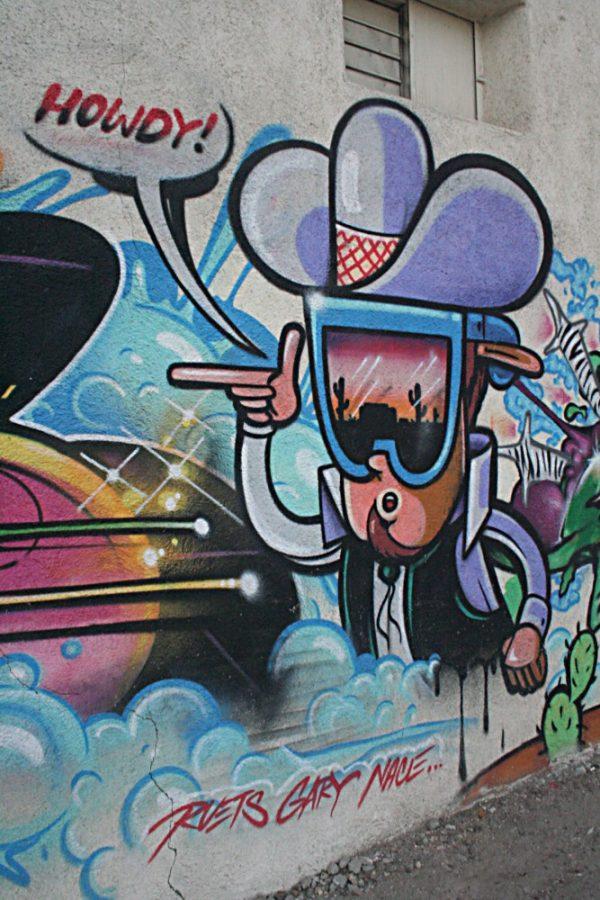The many public art works of Tucson are meant to beautify the city, and while some conjure feelings of shock and disgust, they force the community to talk. Graffiti may upset people but it fosters conversation.
These discussions can result in an understanding about what people do and don’t like about art. As they build opinions, the hope is that the community will become more concerned with public art’s value.
The large, painted murals that are scattered throughout the city are a perfect example — they’re part of community restoration efforts that work with youth in order to promote elements of their neighborhood. Some of these projects also work with teens charged with graffiti violations in order to channel their creativity elsewhere.
The UA has more than 40 pieces of public art all over campus, ranging from Border Dynamics outside of the Harvill building (by Taller Yonke) to the Curving Arcades at the east end of the UA Mall (by Athena Tacha). There’s even a public art walking tour held by the University of Arizona Museum of Art on the third Wednesday of every month.
One of the most controversial works to date was the first in Tucson’s public art collection. David Black was commissioned in 1991 to create something for the Joel D. Valdez Main Library that would incorporate characteristics of the city. The result was Sonora, but it caused quite a stir when finished.
“People hated it,” said Elizabeth Garber, a professor of art education at the UA. “But I think it was a good demonstration as to why the public needs to be involved in understanding what kind of public art is going in certain places.”
Black designed a red, cast iron sculpture which mirrored the curves of the surrounding mountains and flow of the Sabino Canyon.
This enormous body of work resembles a Native American basket with an opening at the top reminiscent of a spirit hole. The finished piece spans 25 feet high and 43 feet wide.
What people saw, however, was an abstract, mangled spider. Another review claimed it to be a monstrosity that was forced onto the people of Tucson. The piece became wildly controversial, according to Garber.
“The only thing that’s not going to be controversial is probably, like, prickly pair cactus,” Garber said. “That doesn’t educate, that doesn’t stimulate us and to me, that’s one of the real functions of art is to make me think differently about something.
That’s the opportunity of public art for people who don’t normally go to museums, and then you bump into it and maybe it creates some new experience.”
A community may not always agree with public art, whether in the form of murals, sculptures or installations, but Sonora became an example of something that got the community talking.
“It might make us think a little differently, experience something a little differently,” Garber said. “It might even create controversy … But it creates a sense of identity for that community.”
That community identity is still well represented in Tucson by groups like the Southern Arizona Arts and Culture Alliance and the Tucson Arts Brigade. Both started, in one form or another, during the late ‘90s, and continue to promote public works of art throughout the city.
TAB’s mural program — which is partially funded by SAACA — is a perfect example of the good that can come of public art by taking creativity and channeling it in the proper direction.









